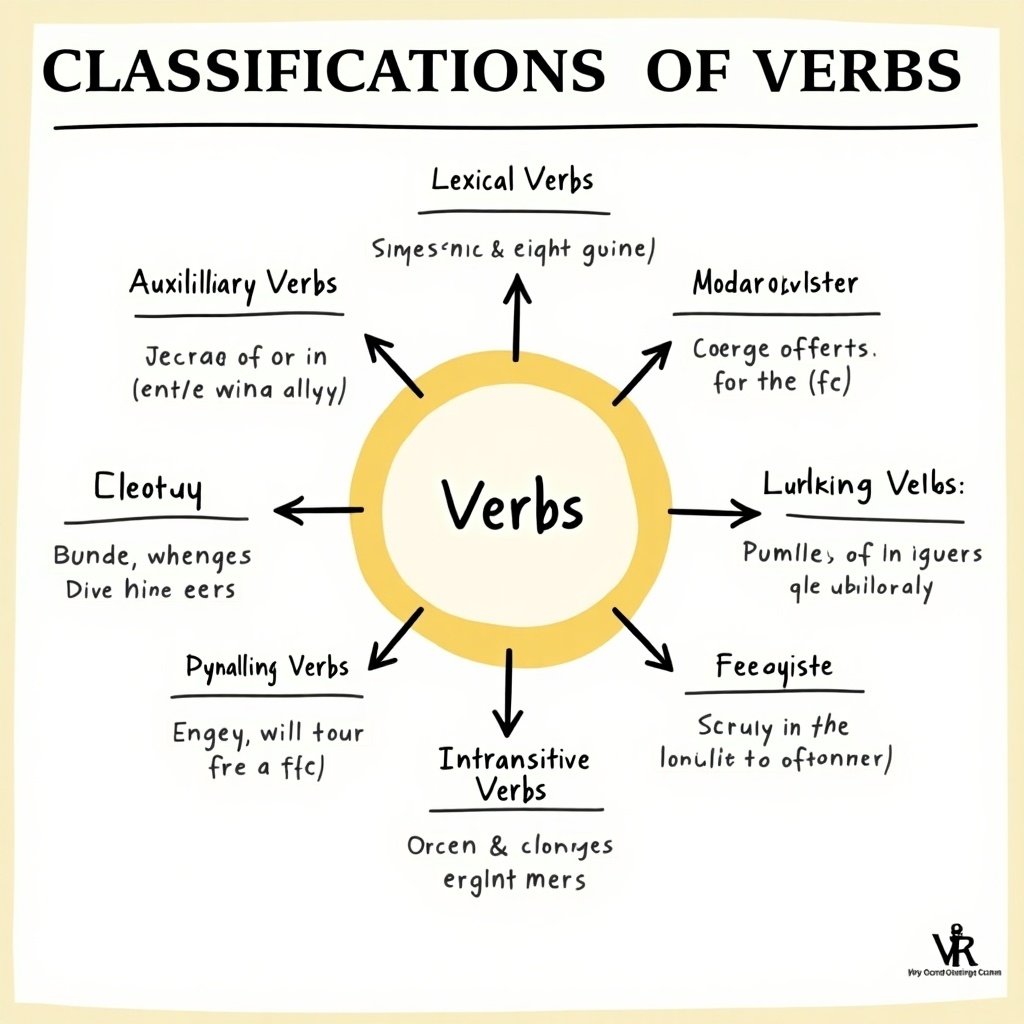Classifications of Verbs
1. Lexical Verbs (Main Verbs):
These are verbs that carry the main meaning in a sentence. They describe the action or state.
Examples: eat, run, sleep, understand.
Sentence: She runs every morning.
2. Auxiliary Verbs (Helping Verbs):
These are used alongside lexical verbs to form tenses, voices, or moods.
Examples: is, are, was, were, have, had, do, will, shall.
Sentence: She is running. (is helps the verb running.)
3. Modal Verbs:
These express necessity, possibility, permission, or ability.
Examples: can, could, shall, should, will, would, may, might, must.
Sentence: You must finish your homework.
4. Linking Verbs:
These connect the subject with more information about it, such as a state or condition.
Examples: am, is, are, was, were, seem, become.
Sentence: He seems tired.
---
Categories of Verbs Based on Use
1. Dynamic Verbs:
Show an action that is ongoing or completed.
Examples: run, eat, jump.
Sentence: She is eating lunch.
2. Stative Verbs:
Express a state or condition, rather than an action.
Examples: know, love, belong, seem.
Sentence: I know the answer.
---
Finite vs. Non-Finite Verbs
1. Finite Verbs:
Show tense, number, and agreement with the subject.
Example: He writes. (writes is in the present tense, agreeing with "he.")
2. Non-Finite Verbs:
Do not show tense or subject agreement. These include:
Infinitives: to eat, to run.
Gerunds: eating, running.
Participles: eaten, running.
Sentence: I like to read. (to read is an infinitive.)
---
Transitive and Intransitive Verbs
1. Transitive Verbs:
Require a direct object to complete their meaning.
Example: He reads books. (books is the object.)
2. Intransitive Verbs:
Do not require a direct object.
Example: She sleeps.
---
Regular vs. Irregular Verbs
1. Regular Verbs:
Form their past tense by adding "-ed" or "-d."
Example: walk → walked.
2. Irregular Verbs:
Do not follow regular patterns for past tense forms.
Example: go → went, eat → ate.
---
Would you like me to expand further or focus on exercises for clarity?, This infographic illustrates the classifications of verbs. It includes categories such as lexical verbs, auxiliary verbs, and modal verbs. Each type is defined with examples and sentences for clarity. The image is designed in a circular flow, indicating relationships and hierarchies. The design uses a bright color palette for better engagement and understanding











